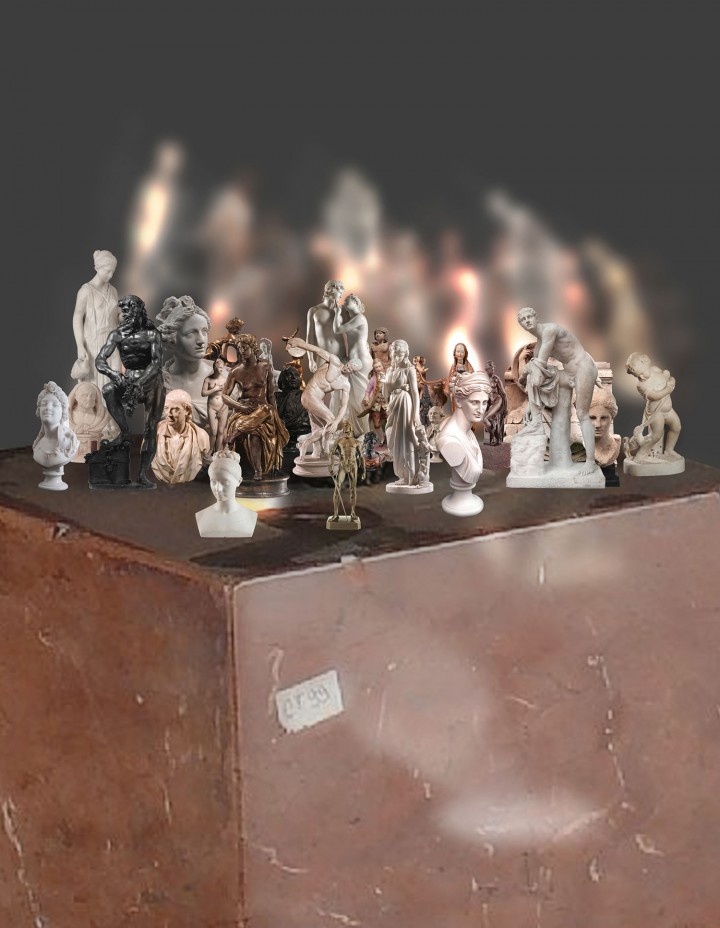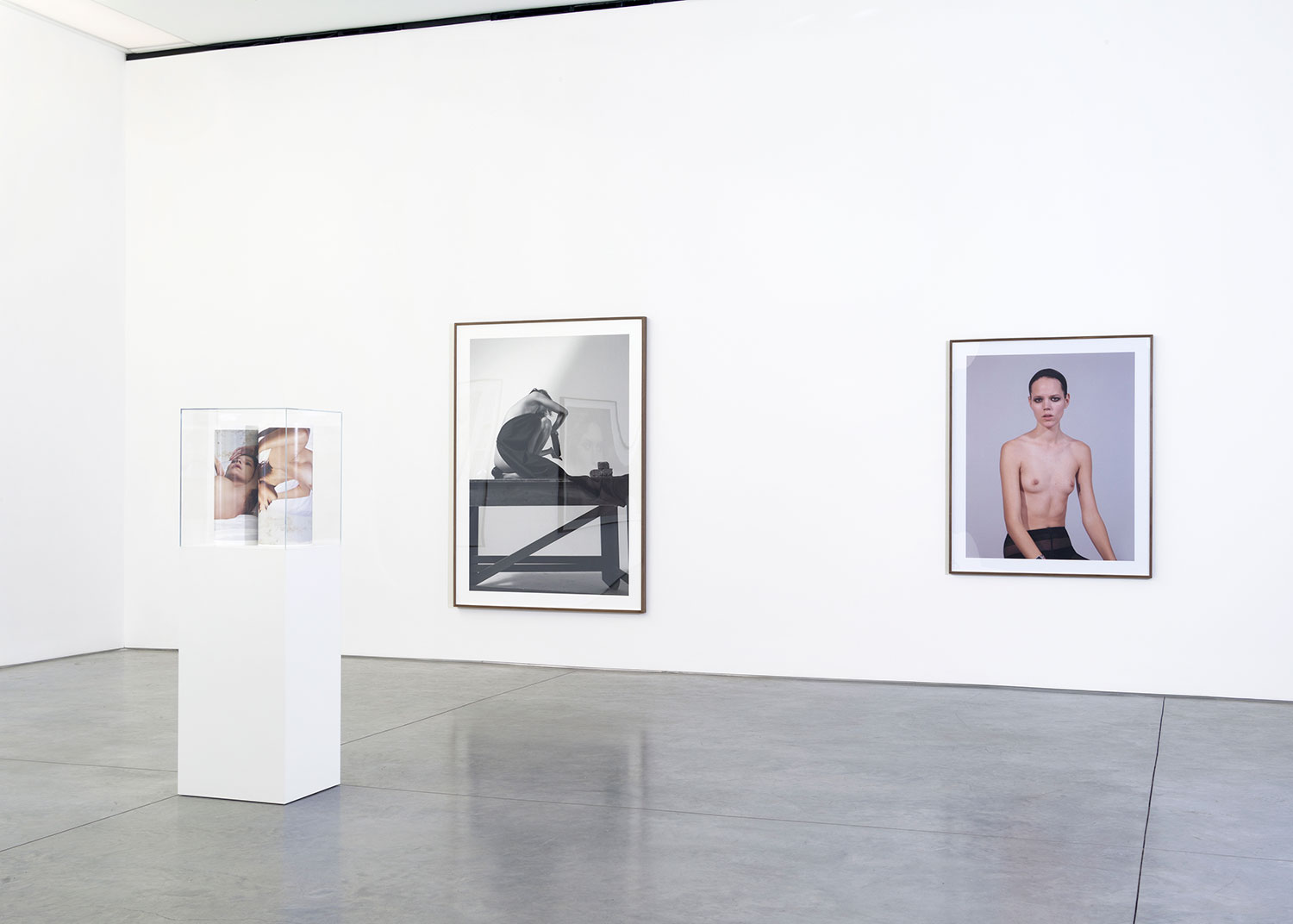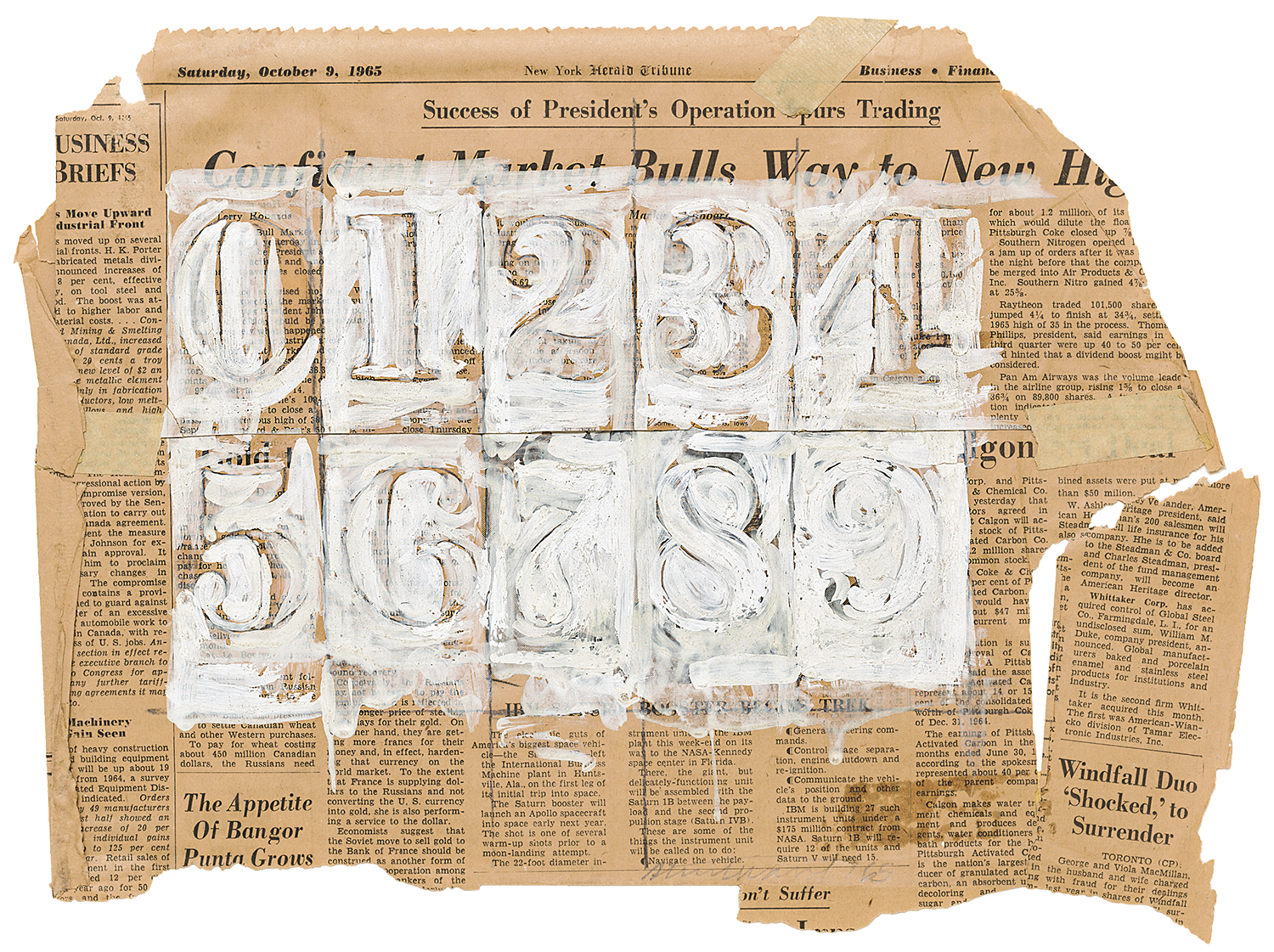
1. Why is the auction market for contemporary art continuing to grow?
2. Stratospheric auction results for works by artists in their twenties are no longer uncommon. Is the market for works by younger artists changing?
3. Will there be a return to more established figures or works of past generations? Or will this focus on youth continue?
4. Is it possible that a single work will sell for a billion dollars in your lifetime?
5. What’s the impact of online bidding?
Artcurial
Gioia Sardagna Ferrari / Specialist in Modern and Contemporary Art
1. Today people understand that art is a safe asset and an alternative investment. The art market is no longer a business for a few amateurs; new specializations and attractive prices have helped auction houses to find different target clients. In 2013, Artcurial recorded an increase of 24% with respect to the previous year — certainly the great variety of specializations and the presence of twenty different departments have allowed Artcurial to become the most important auction house in France.
2. Auction houses are without any doubt primary references in price and market demand. In recent years the opinion of an auction house has had more influence than galleries in determining the valuation of an artist.
3. Both of them. What distinguishes Artcurial from other auction houses is our eclectic approach to the art market. Even if Artcurial is the most important auction house in France, we also promote contemporary art and young artists. We are an auction house and a cultural center at the same time. In addition to ordinary auction sales activities we organize lectures, artist talks, and we have the best art library in Paris.
4. Of course! In the art world everything is possible!
5. Online bidding is an intelligent way to introduce people to the art market thanks to accessible prices. But we don’t consider them as competitors because we don’t have the same target market. I think we are complementary!
Bonhams
Ralph Taylor / Director, UK Board
1. The art marketplace has become infinitely more democratized through the growth and ever-greater potential of the Internet. As a result all the auction houses have become customer-oriented rather than closed books. The manner in which modern collectors consume information also contributes to the rise in sales; if auction houses are the center of the wheel, with all the various spokes leading inward, then as the most visible and recognized marketplace for art it’s easier for new collectors to follow and initiate their collecting activity. Clearly art has also emerged as a legitimate alternative asset class, outperforming every international stock market over the past fifteen years, and the origins of new collectors have multiplied exponentially.
2. High prices for young artists generally make me uneasy. A creative career should last until an artist is seventy years old. It’s suicidal to give up half way through, so how does an artist sustain multiple six-figure results for that length of time? As blue-chip artists have reached levels that are untouchable by all but the most committed and wealthy collectors, a new breed of buyer, often from an investment background, is trying to pick a winner. It’s unsurprising given that an artist out of art school would probably have a maximum price tag for a major work at £5,000; if in two years the artist explodes, the return could be double-digit or more. And yet he or she is still only, say, 28. It’s very attractive and it is certainly exciting, but for many there will come an adjustment, and how each artist and the collectors that backed him or her react will be telling.
3. Everyone knows the market is cyclical. I would see fashions rolling back round periodically, but the great change will be driven by the tastes of new collectors onto the market. One example: this is the first broad generation of African-American collectors who are able to buy with freedom, and so I suspect the tiny proportion of African-American artists in the USA to grow greatly. Linked is the position of female artists. The results for great works by prominent female artists are a fraction of their male counterparts.
4. Absolutely, I have no doubt this will be the case. One billion is increasingly a small percentage of the total wealth of a growing number of people. Generally those with wealth over $100m look to incorporate art collections into their portfolio — the stats are dizzying. The well of artworks with the potential to make this kind of figure is drying up, as private institutions outnumber public ones and so the supply-demand balance is out of kilter; when a major work turns up from an artist who has not been prolific (Van Gogh over Picasso for example) then the sky is the limit.
5. Online bidding is without doubt a huge part of the future — this is in large part because the experience of a work online is very powerful now but will only increase in impact as developments in display are made. It offers greater privacy, the ability to engage remotely and means that the overheads to the auction houses are slashed. Clearly the showcase auctions will always be exhibited, but as collectors become more democratic demographically the consumption of work should become slightly more prosaic and straightforward.
Christie’s
Sara Friedlander / Vice President and Head of the Evening Sale, Post-War & Contemporary Art
1. It’s a combination of an incredibly healthy and global market and exceptional quality objects worth fighting for. Prices for Post-War and Contemporary Art have been particularly strong for the last two decades as more and more collectors seek the best of the best. Plus, we’ve seen continued strength and stability in the market for art. For example, I can’t tell you how many clients regret not buying more Calder in 2008. Sure, there was a dip in the market, but we proved that art would continue to hold its value. Thus, people are not making the same mistake and are bidding even more aggressively than ever before.
2. It’s complicated. If you’re a twenty year old trying to make it as an artist and your work sells for six figures in an auction you have essentially nothing to do with, how do you feel? What does it mean for your future? Or for the dealer that’s representing you? It’s a tremendous amount of emotional pressure on so many artists who might fly high one day and burn on the block the next. On the other hand, the auction houses have a real opportunity to make a market and truly take an artist to the next level price-wise.
3. The best collectors today look backwards and forwards. Historically, collectors looked back to the Old Masters and the Impressionists, but since the 1950s, collectors began acquiring the art of their time. For many, this is an exciting endeavor as it allows one to connect to the artists, dealers and tastemakers shaping today’s culture. Interestingly, it’s less expensive to buy a Rembrandt etching than it is to buy a Christopher Wool. Right now we’re in a masterpiece market, so if that means a Brueghel or a Warhol — if it’s the best — there will be exciting competition.
4. Why not a trillion?
5. Our e-commerce platform is a game changer. You sit in a saleroom and all of a sudden people are bidding from Italy and Korea. And we’re doing it all — you can bid online for a million-dollar lot in the saleroom or you can buy a watch in our online-only sale. It’s bigger than anything anyone else is doing, and because it’s Christie’s it has the highest stamp of quality.

1. Why is the auction market for contemporary art continuing to grow?
2. Stratospheric auction results for works by artists in their twenties are no longer uncommon. Is the market for works by younger artists changing?
3. Will there be a return to more established figures or works of past generations? Or will this focus on youth continue?
4. Is it possible that a single work will sell for a billion dollars in your lifetime?
5. What’s the impact of online bidding?
Paddle8
Aino-Leena Grapin / Managing Director for Europe and the Middle East
1. Auction houses have benefited from the extraordinary growth in the art market in general, both in terms of volume and price. But, interestingly, they have increased their share of the overall pie, partially through growth in private sales, expansion into new geographies and creative new sale concepts. They’ve also benefited from the influx of new collectors to the contemporary art world, which increasingly intersects with the worlds of fashion, music, tech and media. Auctions are a welcoming entry-point to novice collectors who may feel excluded from galleries or other traditional structures in the art world. Online auction houses, like Paddle8, are especially attractive to these new collectors, as they provide substantially more transparency and access.
2. Paddle8 focuses on inventory priced under $100,000, which often includes works by these very young artists, While we embrace that our collectors are interested in these works, we are also mindful of the dramatic churn of the market and the negative impact that one astronomical and public sale can have on an artist’s career. To that end, Paddle8 never publishes post-sale auction results, partially in order to prevent an artist’s market from being unduly influenced by a major spike in auction records.
Paddle8 also works with these young artists to find innovative new channels to bring their works to market. For instance, in November we will launch the “Tomorrow”series, which focuses on works sourced directly from the most exciting young artists in different cities.
3. Paddle8 has always promoted the idea that today’s collector is interested in collecting across categories, and that the dialogue of works made across time periods and mediums is often much more compelling that a single, uniform collection. We’ve seen that our collectors are just as interested in the established artists of past generations as in the new guard.
4. It is possible, of course, but I am personally more interested in when we will reach one billion collectors with artworks in their homes.. And in terms of return on investment, I think one might be better off acquiring several artworks around $10,000 to $50,000 than a single £1Bn work at an evening sale!
5. As an online-only auction house, online bidding is Paddle8’s raison d’être. Paddle8 was founded on two premises: first, we recognized that the centuries-old auction industry was ripe for improved efficiency. Second, we identified the emergence of the 21st-century collector — someone who is cost-sensitive, channel-agnostic, nomadic, digitally savvy, craves immediacy and collects across multiple categories — and saw that he was not being served by the brick-and-mortar auction houses. The solution was an online auction house that marries the expertise and elegance of a traditional one with the efficiency, global reach and access of the Internet. In three years, we’ve seen this hypothesis bear fruit. In the first half of 2014, Paddle8 sold $17.8 million worth of art — a 400% increase from the same period in 2013.
Perhaps surprisingly, we’ve found that many of our collectors are the same who had been buying from traditional auction houses but were eager to bid, buy and sell with the same ease that it takes to buy a Valentino dress at Net-a-Porter, book a first-class flight at Kayak, or call a car on Uber.
Phillips
Martin Klosterfelde / Director & International Specialist, Berlin
1. The entire contemporary art world has seen a significant increase in sales in recent years. This seems to be due to two predominant factors. Firstly, there is a great cultural interest in contemporary art, and secondly the market has become globally accessible. In previous times, most collectors were based in Europe and the USA, but now there are contemporary art collections all around the world, in South, Middle and North America, Europe, Eastern Europe, the Middle East and Asia. This has made a tremendous impact on the market.
2. There is more of a market for artists in their twenties both at auction and elsewhere in the market. The collectors of today are often younger than in previous times, and they often desire specific works by an artist and are prepared to spend large amounts of money if they really want a particular work. At auction this can create very high prices, and this can be good for the seller of a work, but we are always conscientious of the impact this can have on the market for a younger artist.
3. It is difficult to predict the future, and even more difficult to predict long-term trends, but my belief is that the market will continue to be strong and will continue to value quality and rarity above all else. We are seeing an increase in the interest and value for many Post-War artists as new collectors learn and explore the market, and as people reappraise the work and art-historical context of artists from previous generations — for example, at the moment we are seeing this with Pictures Generation artists.
4. During my career with auctions I’ve learned never to say never! At auction anything is possible if the bidders have the wealth, means and determination. If it did happen, it would be for a real masterpiece. (And I might have to live for a long time!)
5. We have seen a big increase in clients who use the Internet to bid at Phillips. In terms of online-only auction houses, I do not see online auction houses as a competition at all. We are providing a very different kind service and experience for our clients.

1. Why is the auction market for contemporary art continuing to grow?
2. Stratospheric auction results for works by artists in their twenties are no longer uncommon. Is the market for works by younger artists changing?
3. Will there be a return to more established figures or works of past generations? Or will this focus on youth continue?
4. Is it possible that a single work will sell for a billion dollars in your lifetime?
5. What’s the impact of online bidding?
Sotheby’s
Alex Branczik / Head of Contemporary Art, London
1. The ever-expanding global reach of the art market, including the proliferation of new art fairs and biennials worldwide, has helped to bring many new collectors to the auction house. At Sotheby’s in London, the number of buyers from new markets has doubled over the last five years. This summer in London alone, collectors from over seventy different countries joined in our sales.
2. We like to take the opportunity to showcase these younger artists at moments like Frieze Week, when the focus across the city is on the most recent developments in contemporary art. There was huge interest in artists like Lucien Smith, Israel Lund and Danh Vō during this year’s Frieze Week Evening sale, and I think collectors are excited by the chance to see these emerging artists displayed in a historical context, alongside the greats of post-war art.
3. I think many contemporary art collectors like to be ahead of the curve and thrive in the pursuit of identifying the great artists of tomorrow. But that does not exclude looking at the artists of past generations who have been overlooked by the museum and commercial worlds. Look at the recent critical reappraisal and consequent price correction in the work of Günther Förg, for example, since he passed away late last year.
I think we are already seeing phenomenal interest in both older and newer art as more and more of our clients are choosing to collect across different categories. For example, our July Old Master and British Paintings Evening Sale realized a record total for any Old Master sale at Sotheby’s London. This sale saw a record number of participants from a record number of countries. Many of these same collectors could then be found bidding on contemporary works in our October Frieze Week sales.
4. Anything’s possible. There was a time when people would have been amazed by the prospect of a work selling for in excess of $100m at auction, a figure that has now been surpassed a number of times.
5. The online art market has become increasingly important, and it’s a great way for us to reach new audiences. At Sotheby’s we will soon be launching a partnership with eBay, which will open up a selection of our auctions to eBay’s 145m users — so it’s an incredibly exciting time for the company as we pioneer new models for the online art market.
Villa Grisebach
Daniel Von Shacky / Partner, Head of Contemporary Art
1. One of the main trends in the art market for the past decade has been globalization. We now regularly have bidders from dozens of countries from around the globe. I believe the auction format lends itself to this global audience more easily than art fairs and gallery exhibitions do, so that has been an important driver for growth. Consignors know that through the auction process they can truly reach a world audience, something that is hard to replicate in a private selling environment.
2. It is a very speculative market that can turn very quickly. Just look at some of the names that led evening sales in London and New York in 2006 and 2007. Some of them don’t even trade at auction anymore. I believe we as auction houses bear a special responsibility when it comes to auctioning very young artists. So we are very selective in including such very young artists in our sale.
3. As a matter of fact I believe there is currently a strong trend towards rediscovery of artists of the last thirty to forty years. It started with Zero and a big jump in Arte Povera a few years ago, and is now spreading to the late ’70s and the ’80s with artists like Günther Förg and Albert Oehlen. Compared to some of the prices for young artists, there are some real bargains to be had in this field for some fantastic historical work.
4. Everything is possible, especially on a fifty-year horizon. Fifty years ago 100m dollars at auction seemed far-fetched, too, and it has been achieved several times now at auction.
5. Online bidding has become increasingly important over the last two years. It has added a slew of new clients for us, especially from abroad, so it’s been very worthwhile and we will continue to expand our offerings in that direction. Of course we follow developments in the market very closely, including the advent of the online auction houses. From what I see they seem to cater to a different demographic; in any event, in garnering consignments they rarely cross our paths.





